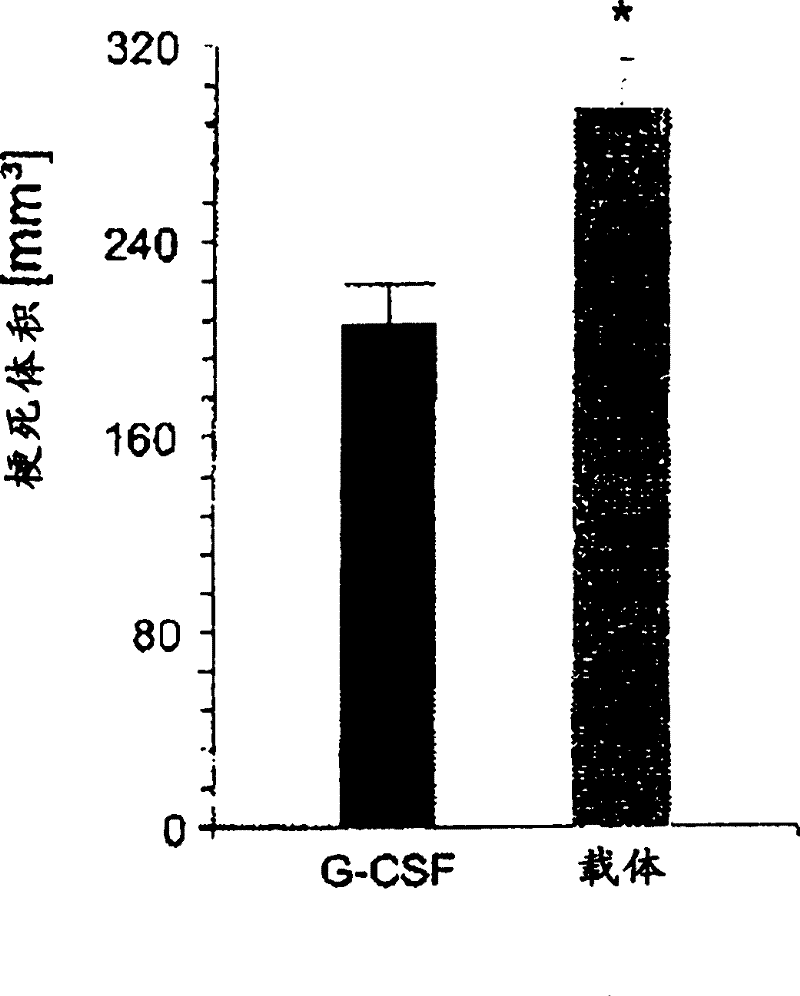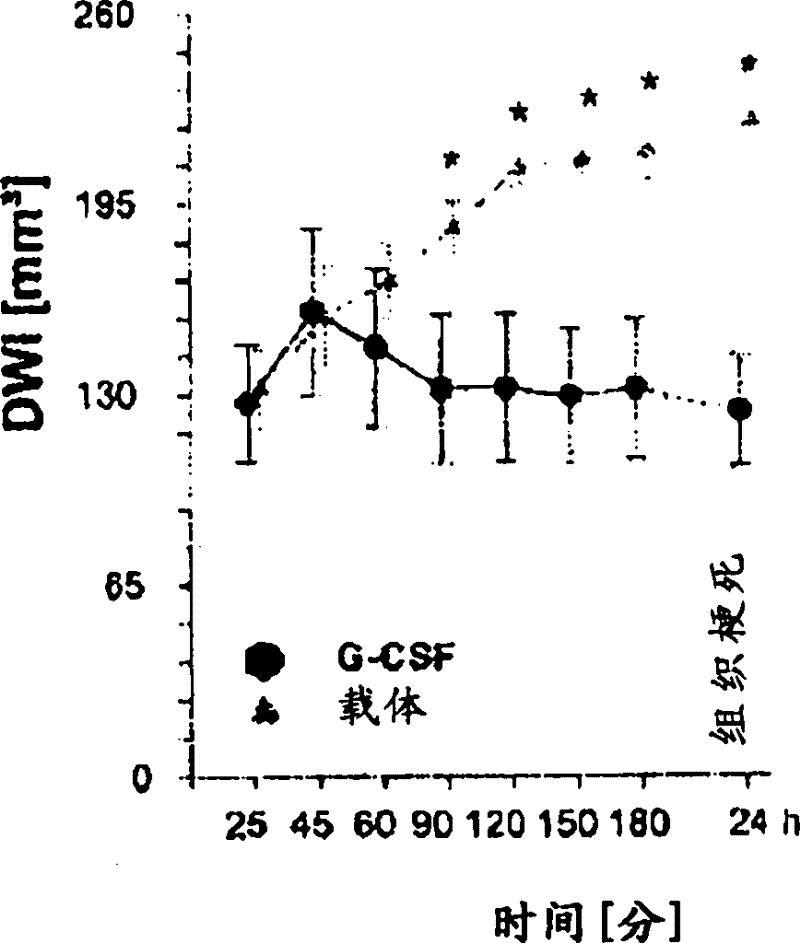Use of G-CSF for the extension of the therapeutic time-window of thrombolytic stroke therapy
A technology for stroke and purpose, applied in the field of application of G-CSF for prolonging the treatment time window of thrombolytic therapy for stroke, can solve the problems of reduced efficacy, limitation and the like
- Summary
- Abstract
- Description
- Claims
- Application Information
AI Technical Summary
Problems solved by technology
Method used
Image
Examples
Embodiment 1
[0046] G-CSF reduces infarct size in an embolization model
[0047] The embolism model of cerebral ischemia may represent a stroke model closer to the human situation than the filament model. To date, the efficacy of G-CSF has not been shown in embolization models. Here, an embolic stroke model was established by injecting a preformed blood clot into the rat internal carotid artery.
[0048] Male Wistar rats (n=20) weighing approximately 320 g were anesthetized with isoflurane (5% for induction, 2% for surgery, 1.2% for maintenance). A PE-50 polyethylene tube was inserted into the femoral artery for monitoring mean arterial blood pressure (MABP) and obtaining measured blood gases (pH, PaO 2 , PaCO 2 ), electrolyte (Na + , K + , Ca 2+ ) and blood glucose samples. Body temperature was continuously monitored with a rectal probe and maintained at 37.0+ / 0.3°C with a thermostatically controlled heating lamp. For embolic stroke (ES), a red blood clot (diameter = 0.35 mm , le...
Embodiment 2
[0053] G-CSF arrests the development of DWI lesions in the presence of persistent perfusion deficit
[0054] Durable filament occlusion of the MCA (suture occlusion of the right midbrain (sMCAO; Bouley et al., Neurosci Lett. 2007, 412:185)) was performed using a 4-0 silicone-coated nylon filament suture as previously described. Wistar rats (n=15) weighing approximately 320+ / 19 g were anesthetized with isoflurane (5% for induction, 2% for surgery, 1.2% for maintenance) in ambient air. A PE-50 polyethylene tube was inserted into the femoral artery for monitoring mean arterial blood pressure (MABP) and Obtain measured blood gas (pH, PaO 2 , PaCO 2 ), electrolyte (Na + , K + , Ca 2+ ) and blood glucose samples. Body temperature was continuously monitored with a rectal probe and maintained at 37.0 + / - 0.3°C with thermostatically controlled heating lamps.
[0055] Perfusion deficit and DWI damage were monitored by MRI measurements over a period of 180 min. These MRI experime...
PUM
 Login to View More
Login to View More Abstract
Description
Claims
Application Information
 Login to View More
Login to View More - R&D
- Intellectual Property
- Life Sciences
- Materials
- Tech Scout
- Unparalleled Data Quality
- Higher Quality Content
- 60% Fewer Hallucinations
Browse by: Latest US Patents, China's latest patents, Technical Efficacy Thesaurus, Application Domain, Technology Topic, Popular Technical Reports.
© 2025 PatSnap. All rights reserved.Legal|Privacy policy|Modern Slavery Act Transparency Statement|Sitemap|About US| Contact US: help@patsnap.com



